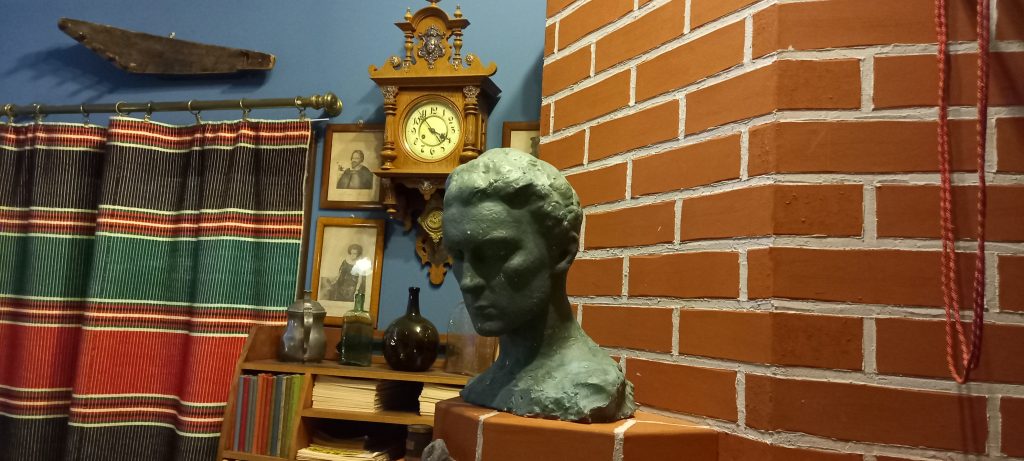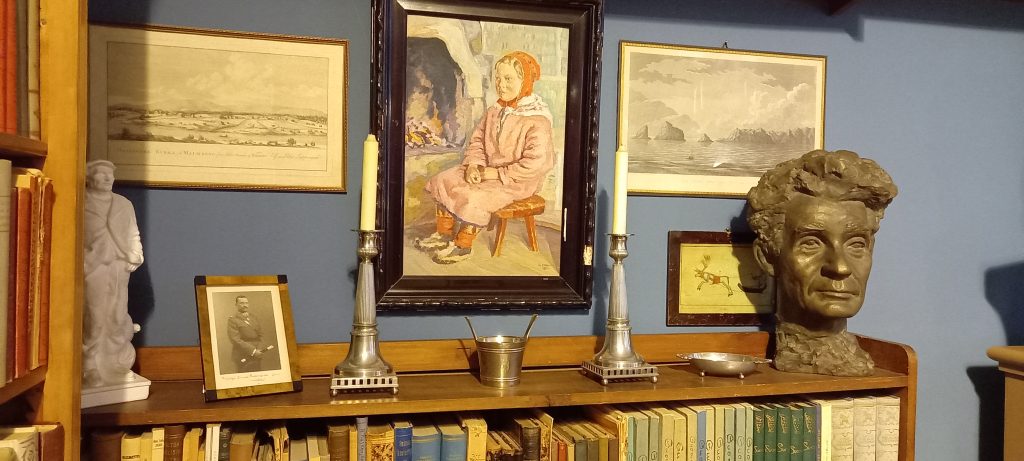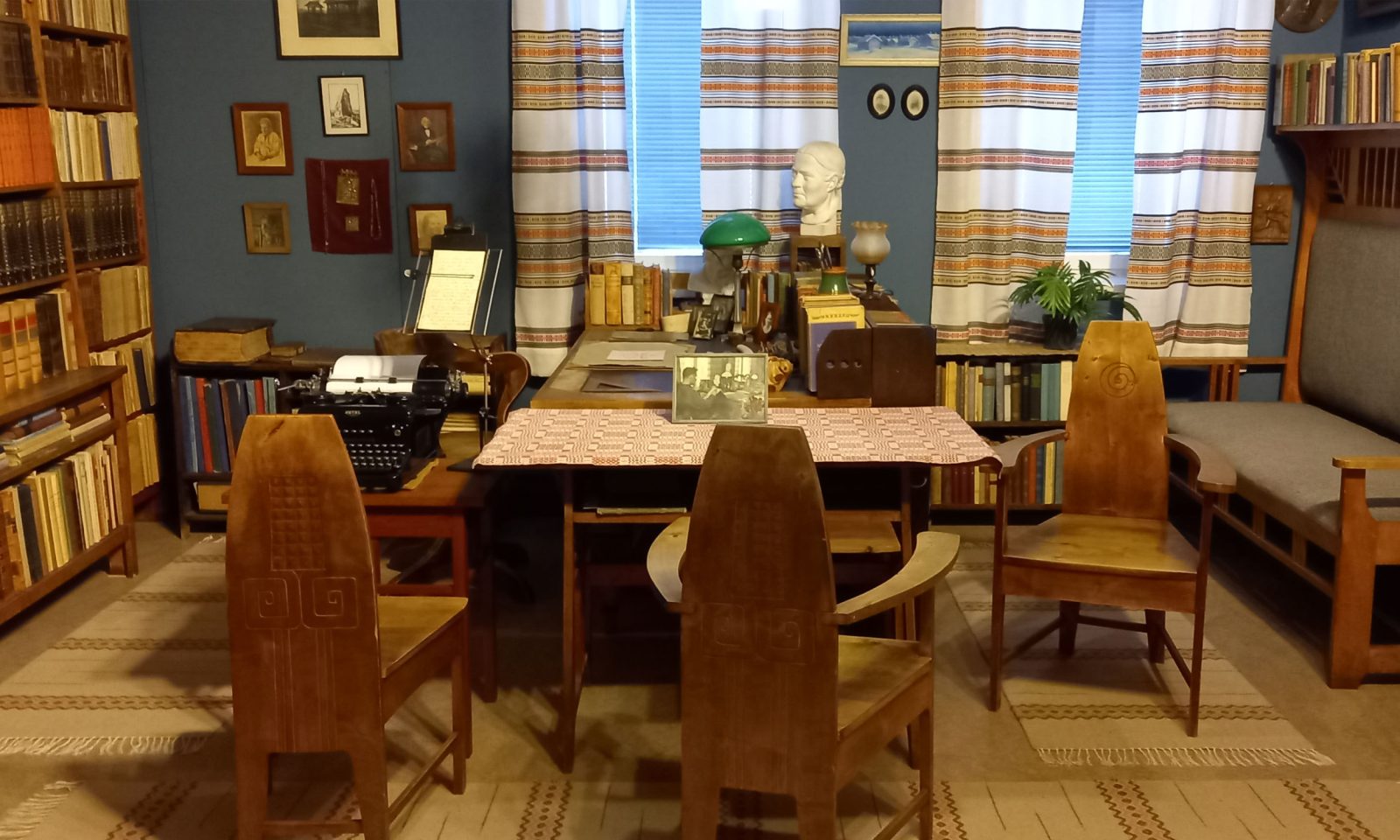Cultural personality and professor Samuli Paulaharju’s (1875–1944) study has been part of the exhibition of the Northern Ostrobothnia Museum since 1986, in other words, for four decades. Visitors have had the opportunity to marvel at the room through a window. The view is an amazing transition in time to the early decades of the 20th century. As if the author had just left the drawing on the desk to return to it again soon. In addition to the huge number of books, attention is drawn to the furniture carved by the man of many talents himself at the beginning of the 20th century. Paulaharju worked not only as a teacher of drawing but also of sculpture at the Oulu School for the Deaf.
The heirs wanted to honor the memory of ethnologist and teacher Samuli Paulaharju by donating furniture and chattels to the Northern Ostrobothnia Museum. Preserving the room as a whole was a cultural act! Paulaharju’s study, including personal items, has been preserved as it was when he died on 6.2.1944. The study was originally located along Valtatie in Tuira, in the “blue house” familiar to Oulu residents. During Samuli’s lifetime, the Valtatie house was called the Takaranta house, and the neighbors called it the Quiet House. It became the “blue house” when Paulaharju had sold it and the new owner painted it blue.

Working and volunteering for culture
During his time, Samuli Paulaharju made a huge contribution to the Oulu Museum (initially the Oulu County Historical and Ethnographic Museum, from 1928 the Northern Ostrobothnia Museum) when he worked as a collection manager between 1908 and 1924 alongside his work as a teacher. Even after that, he was available when the museum board needed his expertise. Maija-Liisa Bäckström, MA and teacher who wrote the history of Pohjois-Pohjanmaan museoyhdistys ry (Northern Ostrobothnia Museum Association), writes about Paulaharju:
Paulaharju’s study shows its owner’s love for Finnish culture, art and folklore. His extensive library is proof of his erudition: the bindings of many books have fallen apart in the hands of their reader. Paulaharju was interested not only in history, but also in the present day of his own time. He followed ethnographic research and corresponded with researchers in the field. Paulaharju was an enthusiastic, persistent and diligent collector and recorder of folklore, “Lönnrot of Ostrobothnia”. His extensive collecting trips resulted in a collection of material which is still unsurpassed in quantity. Samuli Paulaharju was awarded the title of professor for his work in 1943.

A virtual model of the author’s study
Until the study is once again displayed in the museum’s new building, the public can explore it virtually. We have made a 360-degree model of the room using Matterport technology, which gives you the opportunity to feel like you are inside the room and explore the materials there, for example by browsing through albums. The modeling of the study with additional materials will be published online after the Northern Ostrobothnia Museum closes its doors. 2025 is the 150th anniversary of Samuli Paulaharju’s birth. What would be a better way to commemorate a cultural legend who had a long-lasting impact on Oulu?
Text and photos: Curator Arja Keskitalo, Northern Ostrobothnia Museum Thanks to Marjut Paulaharju, PhD, Archivist Meeri Rauhala and Curator Jonna-Maria Möller for comments on the texts
Sources: Paulaharjun huonetta koskeva arkistoluettelo, Pohjois-Pohjanmaan museo
Maija-Liisa Bäckström, Pohjois-Pohjanmaan Museoyhdistys r.y. 1896–1976, Oulu 1976
Samuli Paulaharju’s study has been published in Anne Helttunen, Annemari Saure, Jari Suominen, Haltiakuusen alla – suomalaisia kirjailijakoteja, 2013.
